Being the longest river in Northern America and the third-largest in the world, covering ten states, it is not surprising that the Mississippi River holds so much life; animals, plants, and other species. It has all the natural features that make it a more suitable habitat for different species than any other river.
On the Mississippi River, more than 400 species of animals make this place their permanent home, making this a perfect spot for nature lovers and tourists who enjoy this majestic river’s environment. Aside from providing a home for animals, the Mississippi River also is home to more than 2,700 plant species; 217 nonvascular plants, 72 ferns, 11 conifers, and more than 2,400 flowering plants.

While the number of plants is surprisingly high, not all of them benefit the nature that the river fosters. As some of them might be functioning within the ecosystems that the Mississippi River has now, some might just be causing harm and damage to it. Thus, we’re taking a look at invasive plant species.
Many invasive plant species thrive within the Mississippi River’s ecosystems, and they thrive so much that they even push out native plants that are getting in their way. Because they expand their ranges quickly and lack natural competitors and predators, they can cause harm in the most straightforward ways possible.
Here, we will introduce the five most invasive plants on the Mississippi River and how they harm the environment.
1. Eurasian Watermilfoil
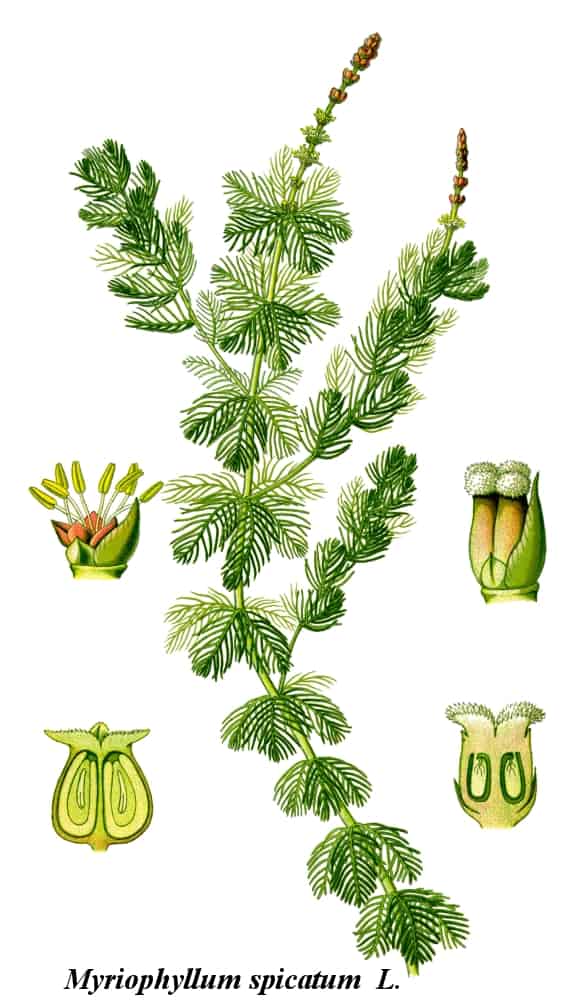
The stem fragments of Eurasian watermilfoil cling to boats, motors, or even trailers.
©Chrizz~commonswiki, CC BY-SA 3.0 – License
| Eurasian Water-Milfoil | |
|---|---|
| Scientific name | Myriophyllum spicatum L. |
| Origin | Eurasia and North Africa |
The Eurasian watermilfoil was accidentally introduced from Eurasia in the 1940s. It possibly distributed its kind by clinging to a boat or from an aquarium. Since then, it has spread all over 33 states east of the Mississippi River, and the most recent case was found in Colorado. The stem fragments of this invasive plant cling to boats, motors, or even trailers to move and infect new areas. These so-called fragments can grow into new plants, which allows them to spread over long distances.
The Eurasian watermilfoil’s typical habitat is within the fresh to the brackish water of rivers, ponds, streams, reservoirs, canals, and even lakes. Moreover, it’s tolerant of many water pollutants, making it hard to eliminate without specific measures. This plant invades disturbed areas and does not typically spread into areas where native plants are established. Despite that, it can also be a threat as it can form floating masses of vegetation on the surface of rivers, lakes, and other bodies of water. Because of its vegetative state on the surface of the water, it can impede water traffic and reduce light for aquatic species that are native and are thriving below the surface.
2. Curly-Leaf Pondweed
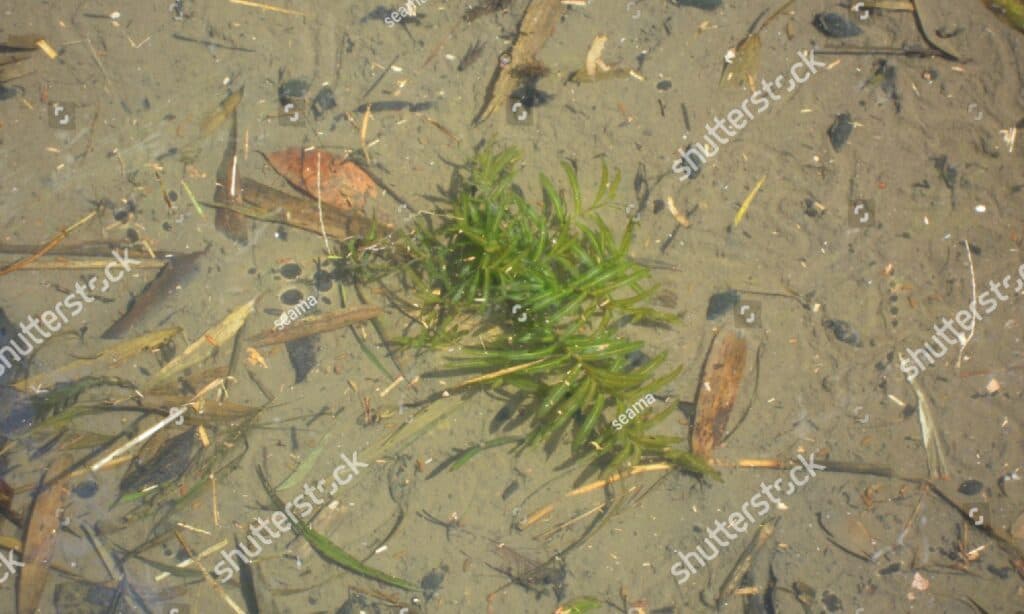
Curly-leaf pondweed can form dense mats above the surface of the water, making it difficult to boat or swim.
©seama/Shutterstock.com
| Curly Leaf Pondweed | |
|---|---|
| Scientific name | Potamogeton crispus L. |
| Origin | Eurasia, Africa, and Australia |
This threat, especially to ponds and lakes, is a native plant of Europe and Asia and is believed to have been introduced at the same time as the common carp. The curly-leaf pondweed is carried and introduced to new bodies of water by clinging onto boats and trailers. Its wavy leaves grow rapidly early in the spring, even under ice, and can outshine native plants.
This invasive plant, like the Eurasian watermilfoil, can form dense mats above the surface of the water, making it difficult to boat or swim. Instead of relief when it dies, it releases nutrients, leading to algal blooms and other problems that can clog the body of water it is in.
3. Purple Loosestrife
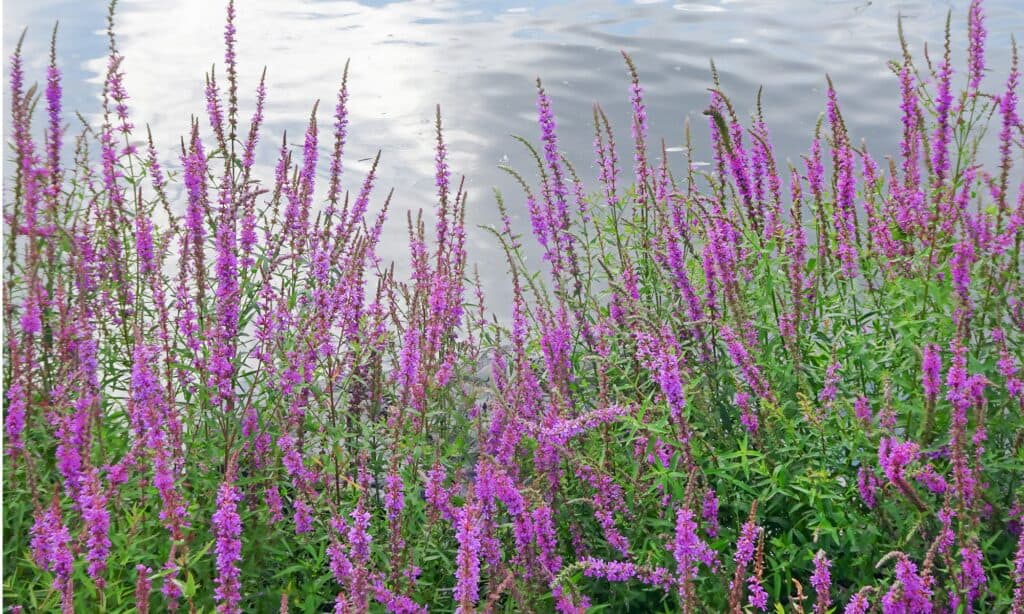
The purple loosestrife spreads its seeds by broken stems that root in moist soils found on and near shorelines.
©iStock.com/Natalia Kazarina
| Purple Loosestrife | |
|---|---|
| Scientific name | Lythrum salicaria L. |
| Origin | Eurasia |
This invasive plant came from Eurasia during the 1800s, and it infects wetlands, lakes, and river shorelines. It displaces native vegetation and reduces homes for animals and food for wildlife by spreading very quickly. Unlike the others mentioned before, it doesn’t create populations on the water’s surface, but it is usually seen crowding out native species of plants on many shorelines.
The purple loosestrife spreads its seeds by broken stems that root in moist soils found on and near shorelines. It has an attractive physical appearance, as it can form stands of bright purple flowers that can grow to at least six feet tall, but it is a persistent invasive plant that will continue growing until all native plants along its path are crowded out.
4. Common Buckthorn
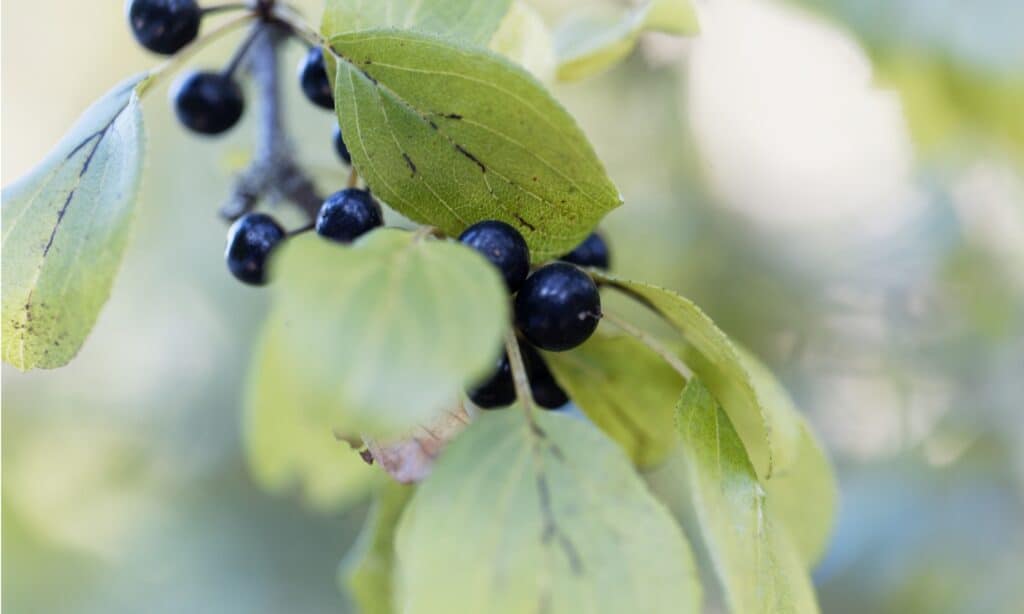
Common buckthorn trees can bear small blackberries during the late summer, attracting birds such as robins.
©iStock.com/weisschr
| Common Buckthorn | |
|---|---|
| Scientific name | Rhamnus cathartica L. |
| Origin | Europe and Western Asia |
This invasive tree is actually small in size, reaching only 20-25 feet in height and 10 inches in diameter. Birds quickly spread the common buckthorn. While some of you might be confused about how birds contribute to their increasing population, here it is: common buckthorn trees can bear small blackberries during the late summer, attracting birds such as robins. The seeds then pass through the digestive system and spread through the dispersal of seedlings.
Once done, the common buckthorn forms a thicket that can shade other plants and shrubs and may prevent the growth processes of other tree seedlings. Even if it is a tree, it has little to no value to wildlife other than providing berries for some birds. Its green leaves can’t be used enough to be a primary food source but only as a starvation source. This invasive species can occur anywhere within the woods.
5. Canada Thistle
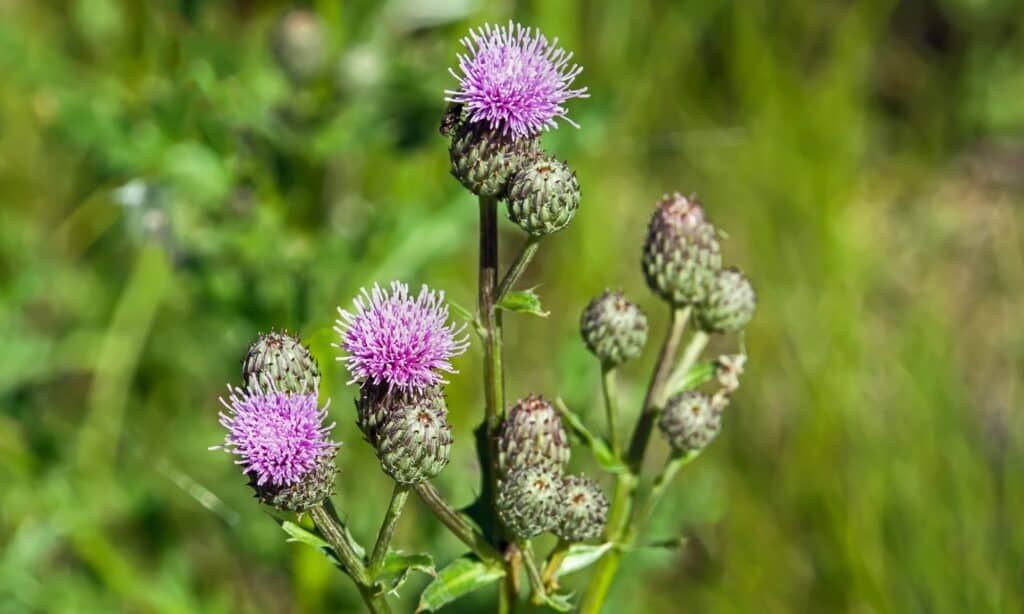
Canada thistle can thrive in areas of meadows, prairies, fields, pastures, shorelines, rivers, etc.
©iStock.com/williamhc
| Canada Thistle | |
|---|---|
| Scientific name | Cirsium arvense |
| Origin | Europe and North Asia |
Despite its common name, the Canada thistle is an original plant from Europe and North Asia, introduced during the 1600s through farm seed shipments. The habitats of these invasive plants vary; they can be found in farm and water areas. They can thrive in areas of meadows, prairies, fields, pastures, shorelines, rivers, etc.
The main problem with the Canada thistle that made itself up on this list is that it crowds out native species of plants and even reduces crop and forage yields. It forms dense infestations to outnumber native plants and prevent them from growing much more. Because of its extensive root system and regenerative abilities, it will continue to crowd out native plants until they are fully invaded.
Summary of 5 Invasive Plants in the Mississippi River
| Rank | Invasive Plant |
|---|---|
| 1 | Eurasian Watermilfoil |
| 2 | Curly-Leaf Pondweed |
| 3 | Purple Loosestrife |
| 4 | Common Buckthorn |
| 5 | Canada Thistle |
The photo featured at the top of this post is © iStock.com/williamhc
Thank you for reading! Have some feedback for us? Contact the AZ Animals editorial team.







